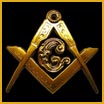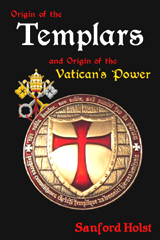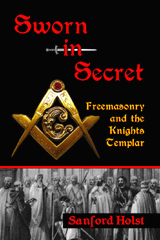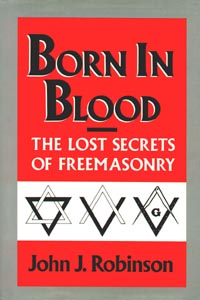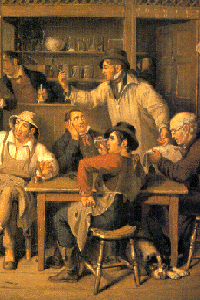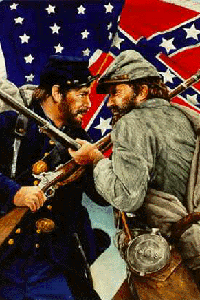|
freemasons history |
||
|
|
||
|
|
Freemasons History
Freemasons History As you may be aware, the history of Freemasons includes elements that are actual, and others that are "traditional." The actual history is mainly found after the emergence of Freemasons' lodges from secrecy on 24 June 1717 in London. Before that time little was known for certain but many colorful stories were told about how Freemasons must have included most of the important men in history -- even Adam in the Garden of Eden. These are called "traditional" history to distinguish them from actual history. Yet they are still an important part of Freemasons' heritage, and sometimes they contain stories that tell life lessons. The lessons are true, even if the stories are somewhat imagined. Our goal here is to bring together more of the actual history of Freemasonry -- even reaching back before 1717 -- so that the practices, rituals, symbols and principles of Freemasonry can be better known and used today. The same rules of critical analysis which are pursued in the separation of what is true from what is false in the history of a nation should be applied to the determination of the character of all statements in Masonic history. This course, however, has, unhappily, not been generally pursued. Many of its legends are unquestionably founded, as I shall endeavor hereafter to show, on a historical basis; but quite as many, if not more, are made up out of a mixture of truth and fiction, the distinctive boundaries of which it is difficult to define; while a still greater number are altogether mythical, with no appreciable element of truth in their composition. And yet, for nearly two centuries, all of these three classes of Masonic legendary lore have been accepted by the great body of the Fraternity, without any discrimination, as faithful narratives of undoubted truthfulness. --Albert Gallatin Mackey The History of Freemasonry Early Years of Freemasons History In 966 BC King Hiram, King Solomon and Hiram Abiff built Solomon's Temple. Freemasons' lodge rooms are based on the design of this temple, and these men play major roles in Masonic ritual. [This outline of Freemasons' history is being expanded in individual articles] In 536 BC After the Temple of Solomon was destroyed and the Hebrew people taken away in captivity to Babylon, Zerubbabel returned to Jerusalem with many of his people and built the Second Temple. In 1119 The Knights Templar were formed at the site of Solomon's Temple, then Grand Master de Molay was burned at the stake in 1314. The question of a possible connection to Freemasonry seems to keep being raised. In 1640 Sir Robert Moray was made a Scottish Mason, then rose to a position of considerable influence with the British king. In 1645 The Invisible College was formed in London and Oxford. With the help of Sir Robert Moray and Christopher Wren this became the highly influential Royal Society in 1660. In 1646 Elias Ashmole was made an English Mason, and went on to create the famous Ashmolean Museum at Oxford University. Public Years of Freemasons History In 1717 Freemasons' lodges emerged from secrecy and formed the Grand Lodge of London and Westminster, which then became the Premier Grand Lodge of England. In 1723 James Anderson published "The Consititutions of the Free-Masons," under the direction of the Grand Lodge of England. In 1725 The Grand Lodge of Ireland was formed in a public dinner reminescent of the English Grand Lodge formation. In 1734 Benjamin Franklin was made Grand Master of the Provincial Grand Lodge of Pennsylvania, and later was master of a lodge in France while he was ambassador there. In 1736 The Grand Lodge of Scotland was formed, with William St. Clair as its first Grand Master, raising questions about whether the St. Clair family had been influential in Freemasonry before its emergence into public view. In 1737 Chevalier Ramsay's Oration pointed to links between Freemasons and the knights of the Crusades. His work was widely credited as being the foundation for Freemasonry's higher degrees, which are found in the York Rite and Scottish Rite. In 1738 James Anderson published his greatly expanded "The History and Constitutions of the Most Ancient and Honourable Fraternity of Free and Accepted Masons." In 1738 The Grande Loge de France was formed, and France would eventually have several Grand Lodges. In 1751 The Antient Grand Lodge of England was formed as a rival to the Premier Grand Lodge of England. However both groups eventually merged to form the United Grand Lodge of England in 1813. In 1776 The American colonies declared their independence, and went on to form a Grand Lodge in each of the new States in the USA. In the 1800s -- Freemasonry was carried to countries around the world. -- The Morgan affair in New York roused anti-Masons. -- York Rite became established, aka American Rite. -- Scottish Rite became established. -- Shriners became established. Today Freemasonry stands at something of a crossroads. Leaders in the craft are in position to restore the energy of prior years, or to sit and watch Freemasonry decline. That part of the history of Freemasons has not yet been written.
Recommended Books on Masons, Solomon's Temple, Templars and the History of Freemasons
Freemasons history ________________________________________________________ Rare Masonic books, Civil War, Best Masonic books, Masonic directory, Masons Templars, Masonic research Masonic authors, Civil War2, Templar medals, Table Lodge Buffalo Bill Cody, Quarry Project, Old Time Freemasonry Sworn in Secret, Early American, Knights Templar, Civil War3 Latest books, Born in Blood, Solomon's Temple, Coil's Encyclopedia York Rite, Allen Roberts, John Robinson, 2010 symposium, Allen Price Grand Lodge England, Holy Grail, Kabbalah, Nadia, Robert Burns Masonic education, UCLA, Stonemasons, Scottish Lodge US Lodges, UK Lodges, Canada Lodges, Australia Lodges Templar Swords, Freemason, Templar Trials, Templars Vatican Origin of Freemasonry, Templar history, Freemasons history © 2008-2024 Sanford Holst - web design by webwizards |
Freemasons history
Something in Freemasons' history and heritage caused men such as American President George Washington and British King George IV to become Masons. We are working to discover those things again. Featured Articles
The 24th of June in 1717 was the often-cited "founding" day of Freemasonry. It was described in this account which first appeared in Grand Lodge 1717-1967, based upon documents created in and about 1738. This has been augmented with notes and images to round out the events surrounding this landmark date—when Freemasonry emerged into public view, and the first Grand Lodge of Freemasonry was formed.
The early days of Freemasonry in America are reflected in this look at the history and contributions of Masons in Massachusetts and Ohio—as seen by brothers in California. It acknowledges the 275 year history of Massachusetts Grand Lodge, and 200 years in Ohio.
It was a time not long after Fort Sumter, and the War of Northern Aggression was well under way. The Yankees, as they are still wont to do, had promptly flocked to Hilton Head and Tybee Islands, the barrier islands on opposite sides of the mouth of the Savannah River....
Freemasons history |








